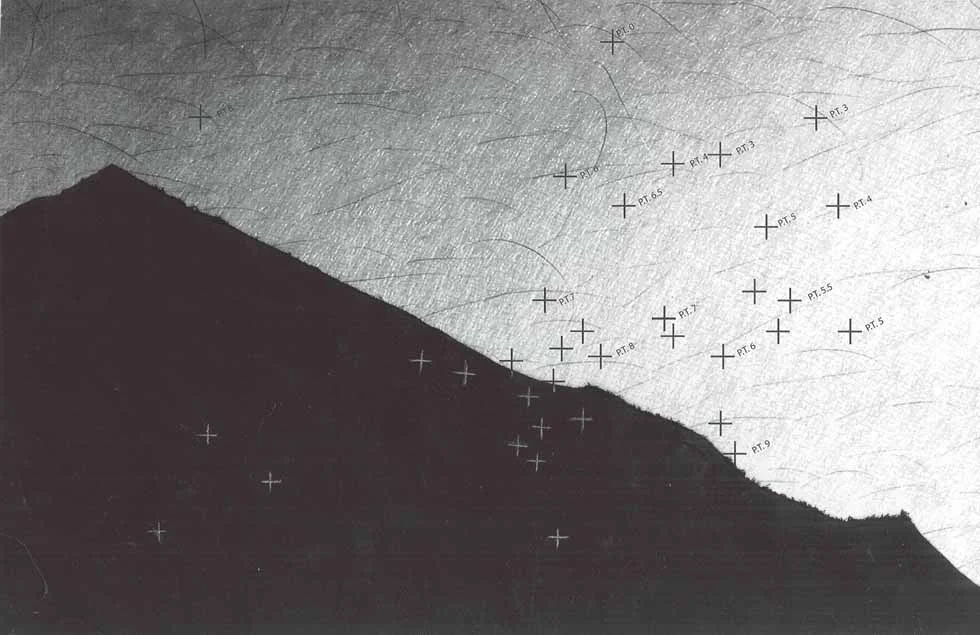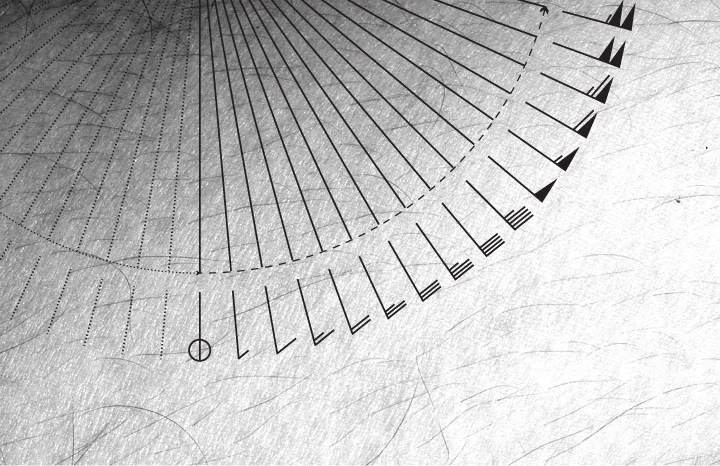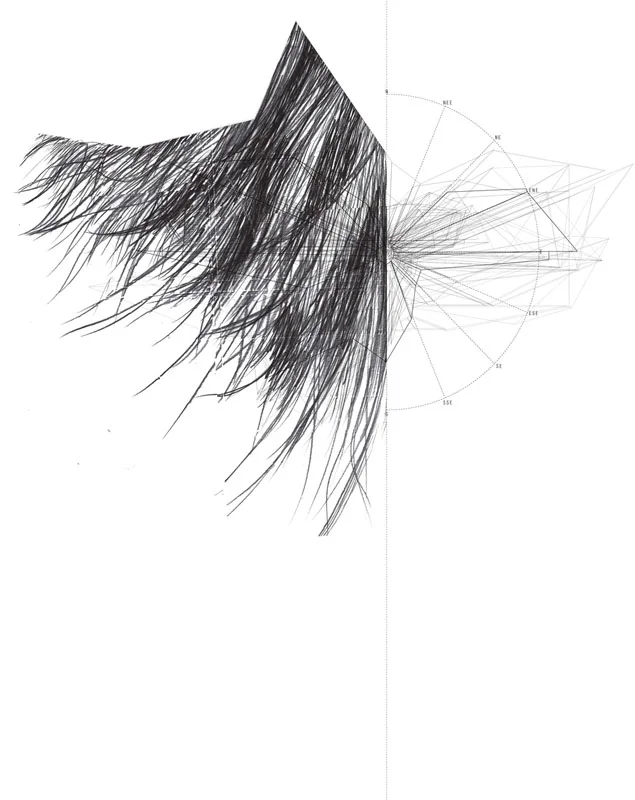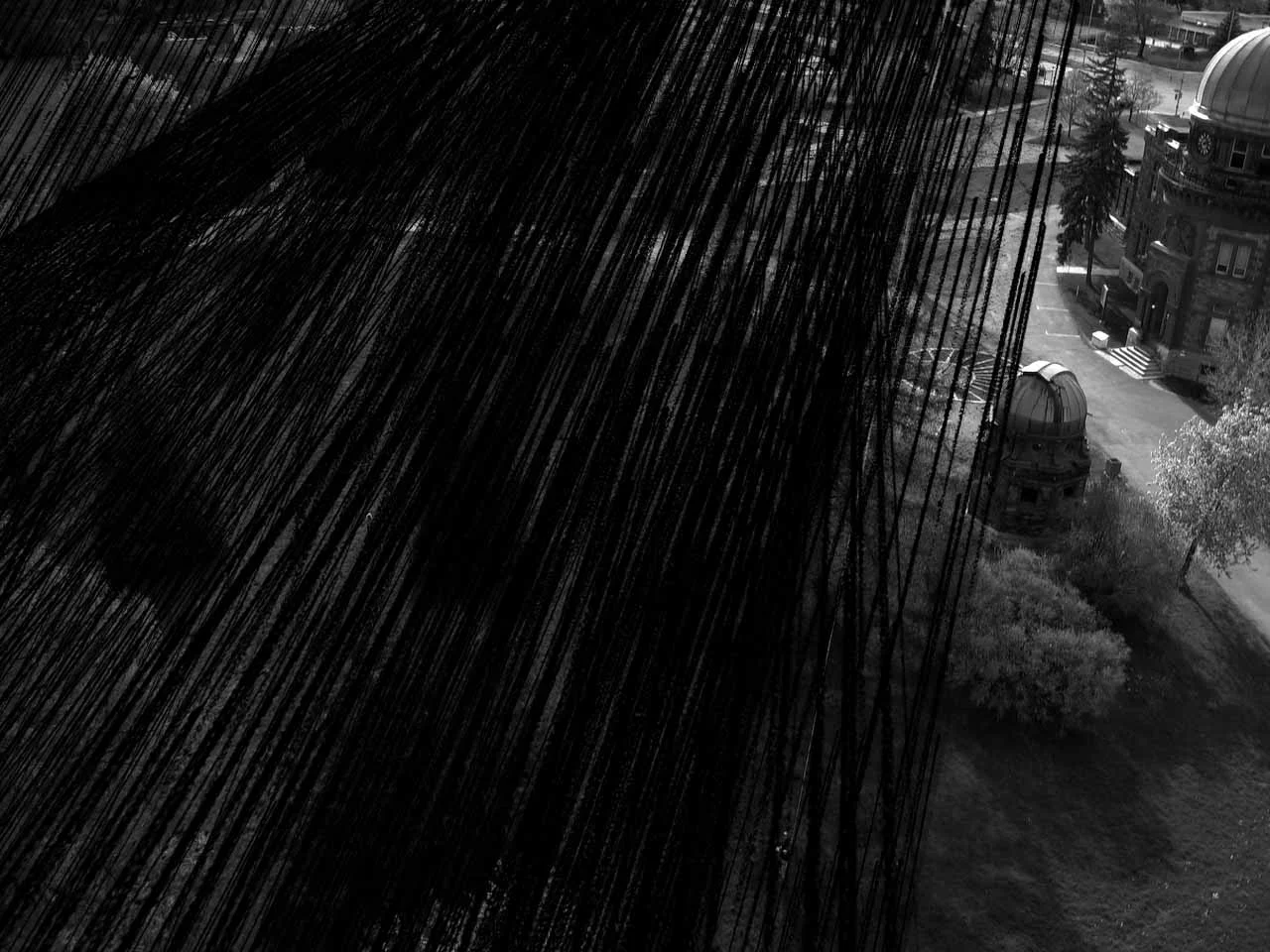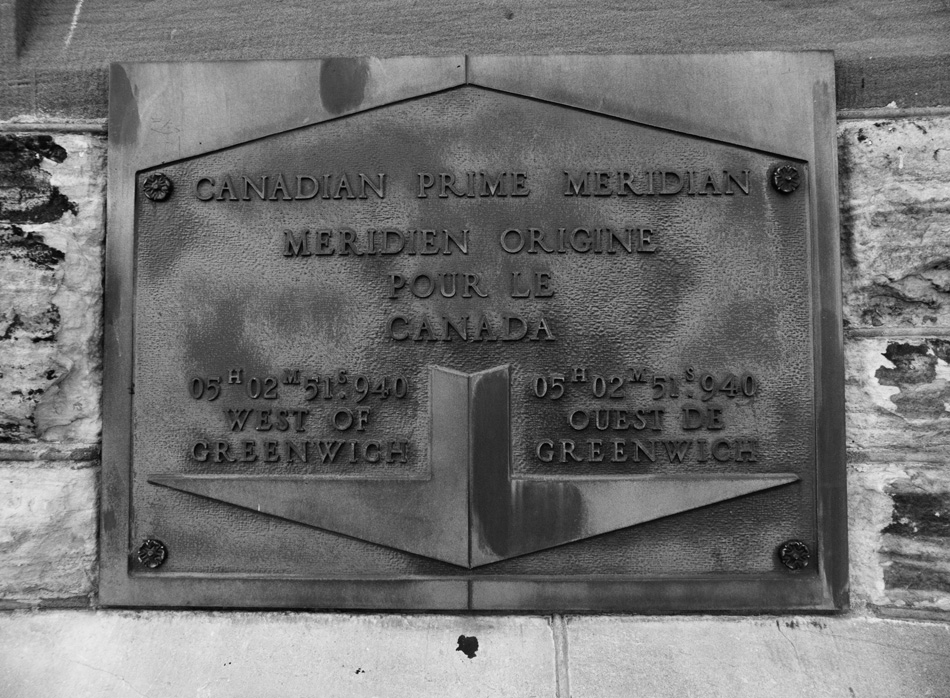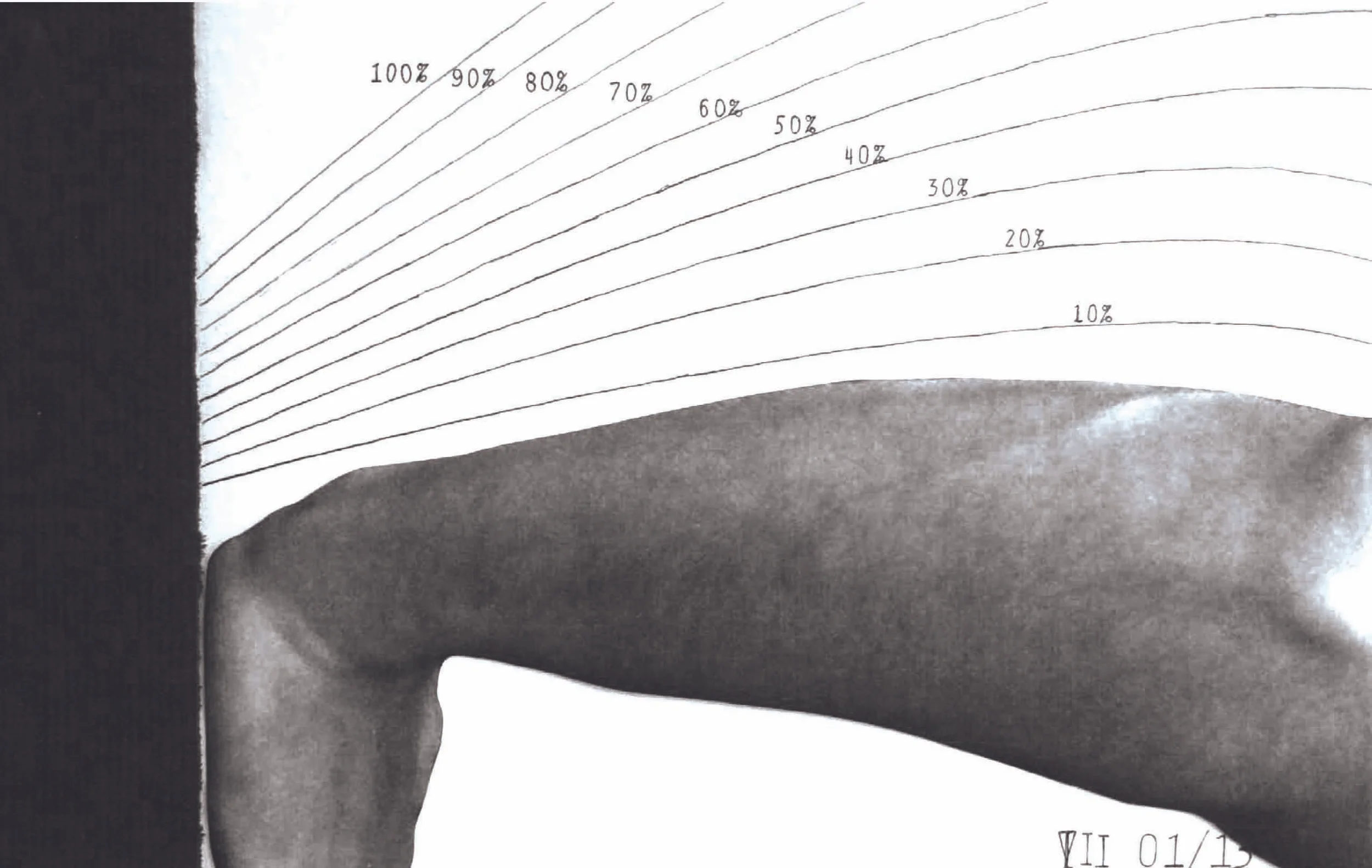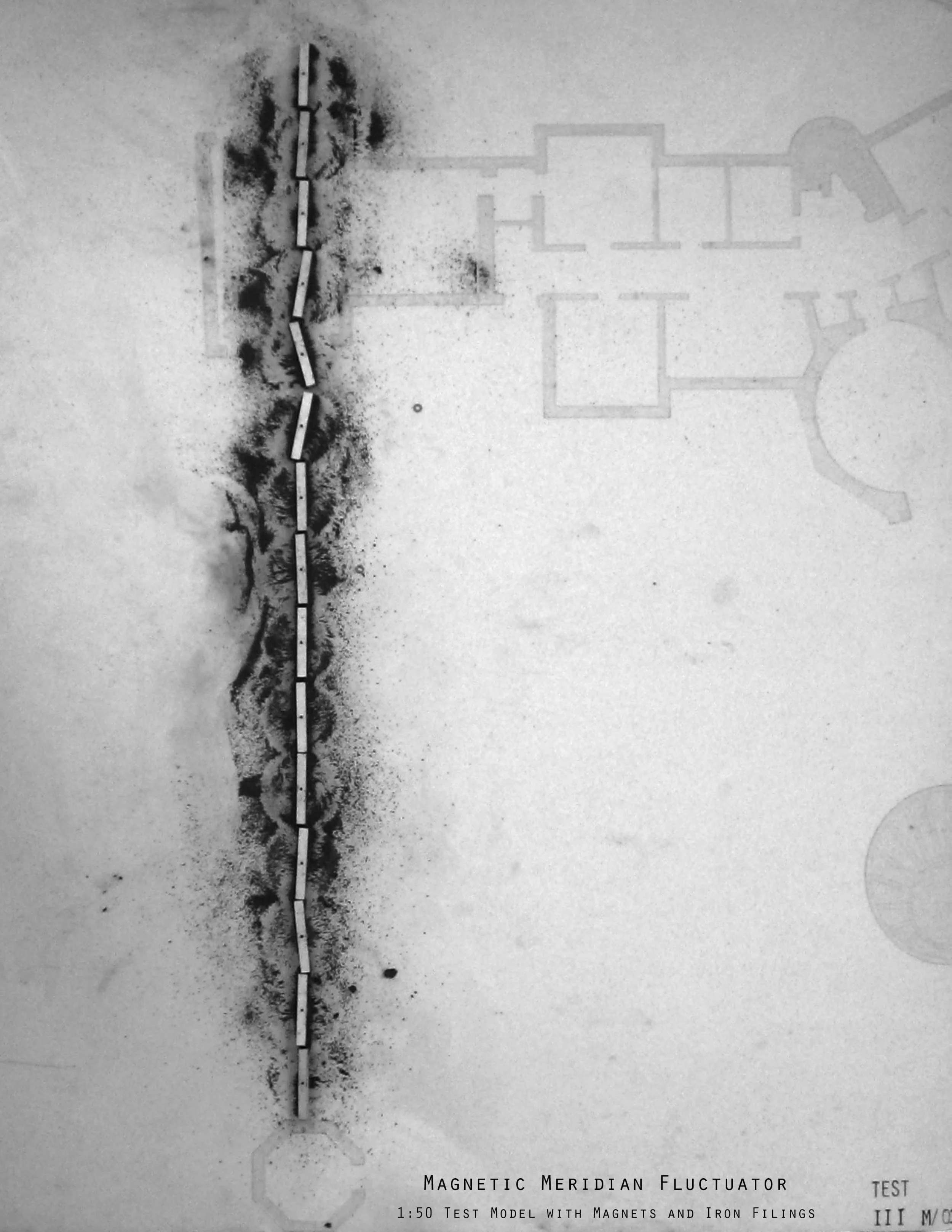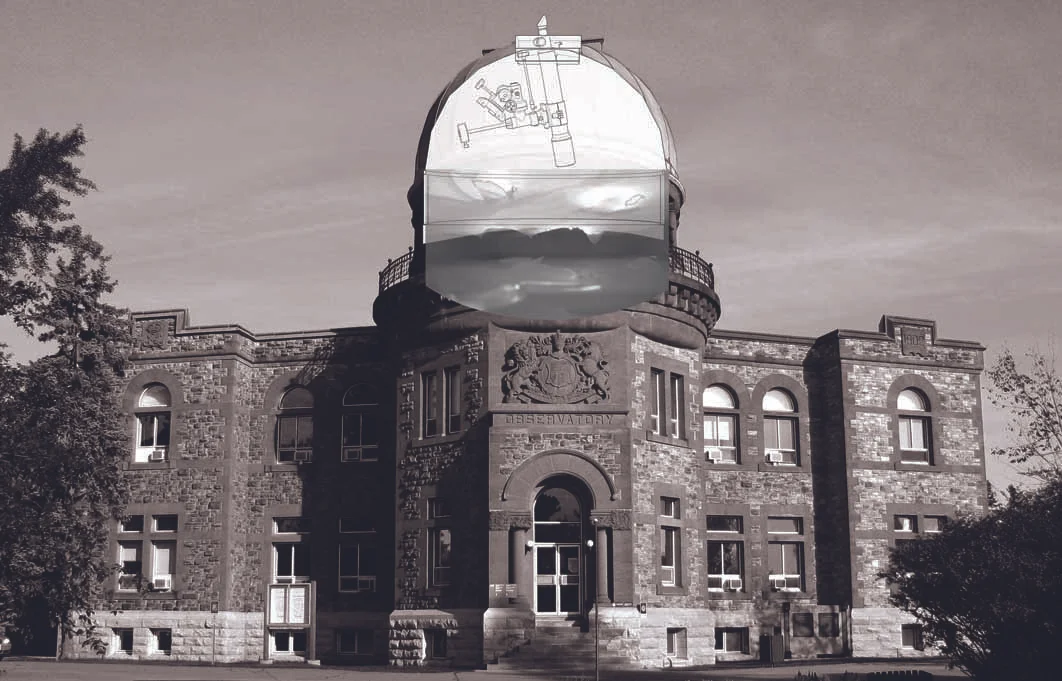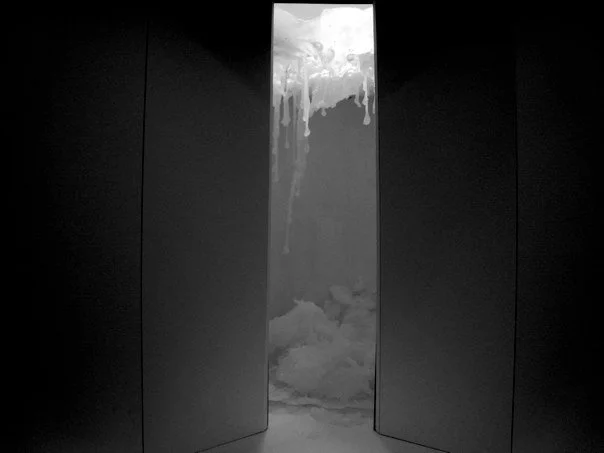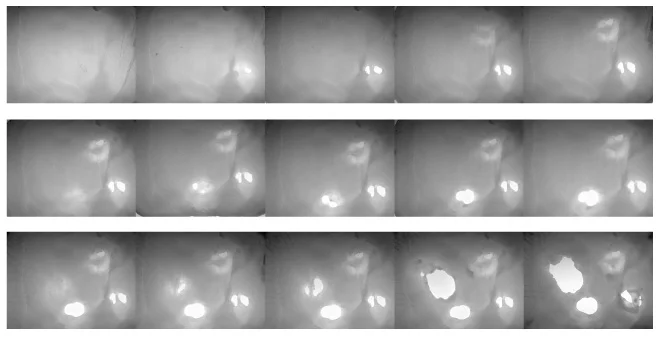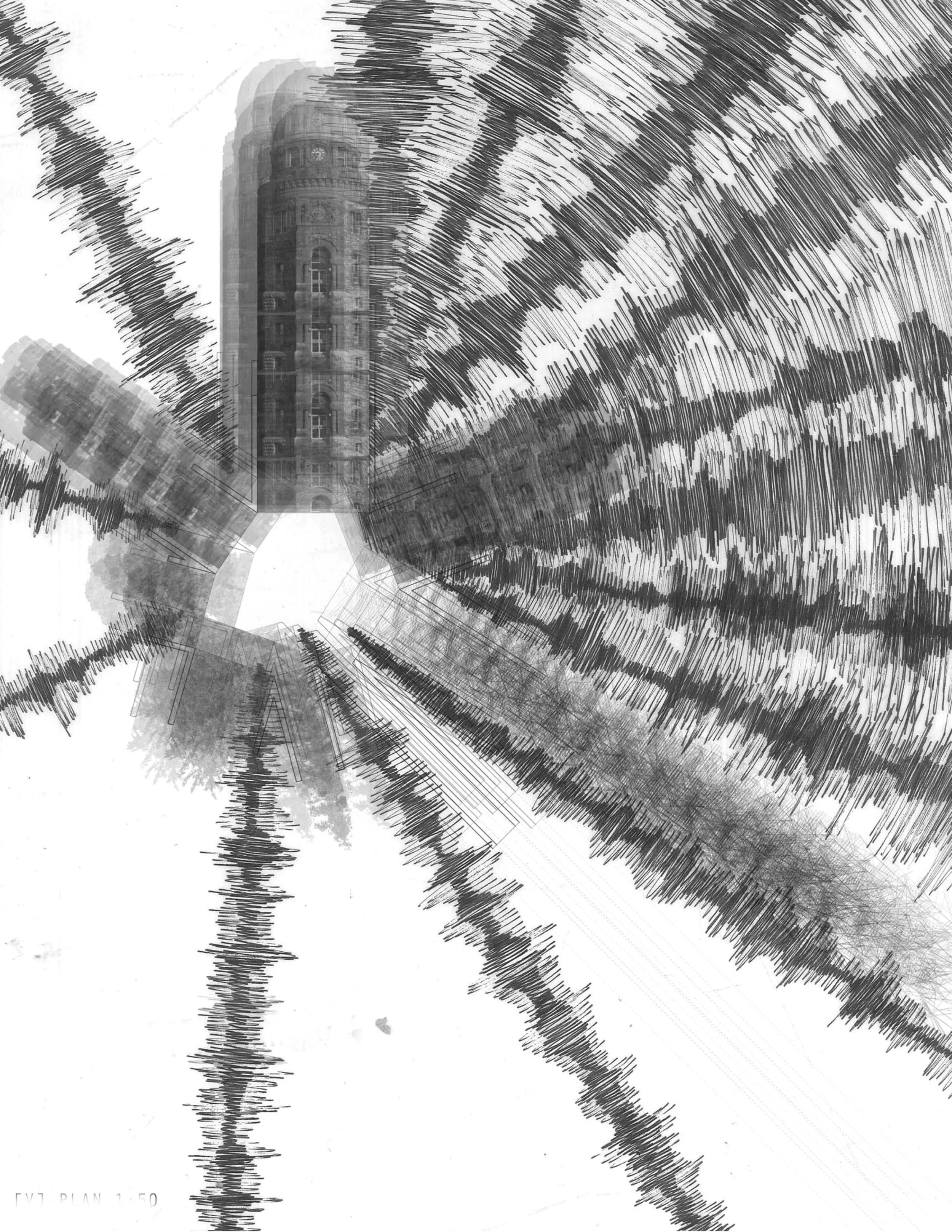Observatory No More, or: Inquiry and Interpretations Concerning the Observations, Findings, and Notes from Space-Gazing, Atmosphere-Exploring, Landscape-Investigating Instruments, Their Experiments, and Other Tasks.
Architectural Proposal | Mixed Media | 2011
Click image to expand
Built in 1905, the Dominion Observatory in Ottawa was Canada's primary reference point for time measurement. By tracking the movements of the Sun relative to the Earth, a construction of time was determined and dictated to the country. The Observatory closed in 1974 when its duties were succeeded by the more precise atomic clock. This shift from astronomical observations to the atomic clock meant a shift from an ontologically continuous (“what is”) experience to an analogical one (“what is like”). The Observatory was abandoned because its technological functions were no longer needed. However, as Sigfried Geidion and Lewis Mumford have noted, with the demands of pure functionality we run the risk of only operating technology rather than experiencing it.
The distinction between the pleasure of experience and pure functionality recalls architecture's current quest to balance the act of drawing with its computational representations, while the distinction between a model of nature and nature itself brings to mind the discipline's ongoing attempt to build reality from representation.
The proposal for the Observatory is a reformulation of the existing site to host new “instruments” that swing between registering the physicality of nature and demonstrating its scientific abstractions. This proposal is explored through of physical drawing combined with computer-aided forms. The resultant visualizations incorporate representative materials (digital ink, charcoal,spray paint) with actual proposed building materials (leather, wax, magnets). During the conception of these “instruments” through drawing, different interpretations of the Observatory are gleaned.
The Instruments - A Brief Description.
Windrose De-Abstractuator -The observatory is notorious for being on one of the windiest spots in Ottawa. Monthly windrose diagrams for the area are translated into a 12-story staircase, each step aligned with a cardinal direction in plan. Fine leather lashings are hung from the metal grating of the steps and translate the wind directly onto the skin of the user.
Inverted Telescopic Solar Magnifier & Tracker -The disused observatory telescope is inverted to magnify the solar rays back into the building to melt wax. The result is an accumulation of effects that render the solar movements in an immersive, habitable space.
Magnetic Meridian Fluctuator - The Canadian Prime Meridian, which runs through the site, is made tangible with a row of magnetic benches that can be pivoted to momentarily break the longitudinal line. The benches oscillate between true north and magnetic north.
Zone of Intermittent Saturation Registrator - The copper dome of the former photo-equatorial building is inverted to funnel rain into a cellulose sponge that stretches down to the water table. Users circulate through the sponge’s cavities that shrink and expand in response to the surrounding saturation levels.
Micro-seismic / Micro-tremor Periscoping Amplifier - Micro-seisms and micro-tremors imperceptible to humans are registered by geophones and amplified through an 8-sided periscopic enclosure with spring-mounted mirrors that visually vibrate the surrounding buildings.
